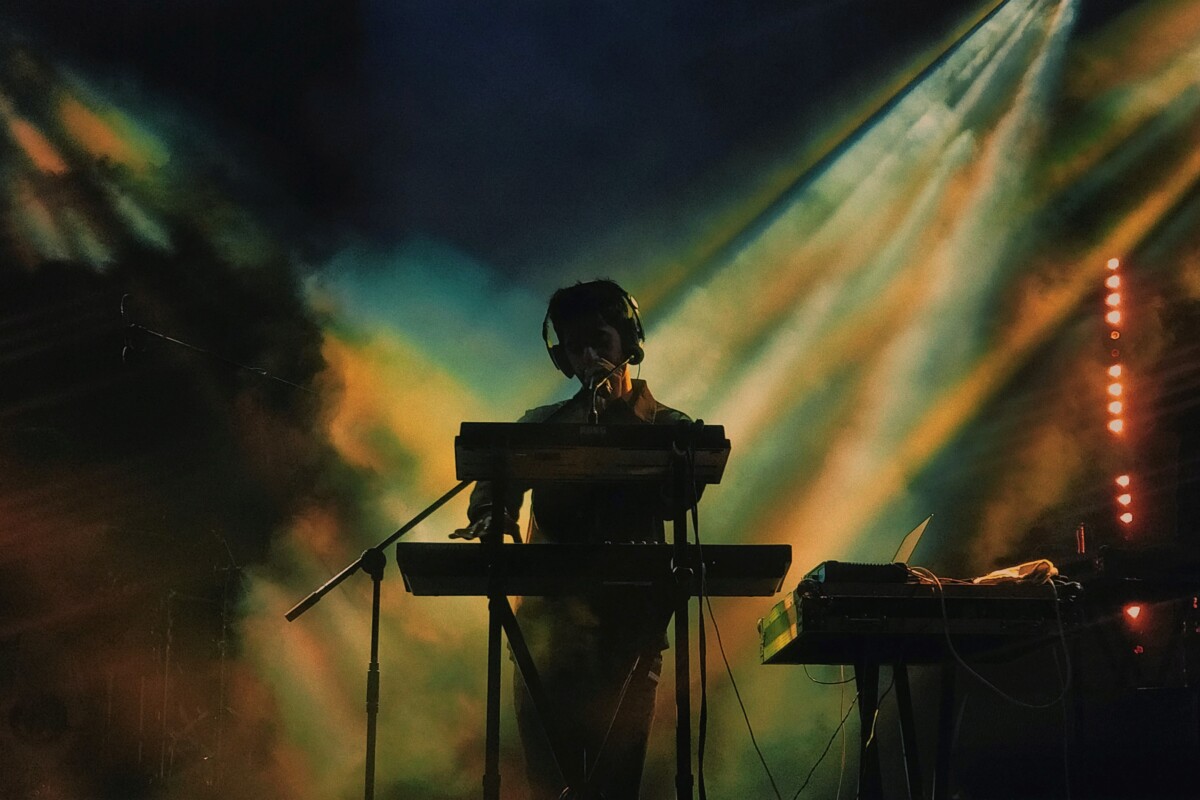A successful live performance can make or break a musician’s career. A poorly executed performance can turn off potential fans, while an outstanding performance can solidify an artist’s place in the industry and build their fanbase. Successful live shows require careful planning, preparation, and execution—the benefits of getting it right are well worth the effort.
This blog post aims to provide musicians with a comprehensive guide to creating a successful live performance experience. From researching your audience to connecting with fans after the gig, this post will cover all the essential steps to making your live shows unforgettable.
In this post, we’ll cover the following topics:
Preparation and planning are the foundation of any successful live performance. We’ll cover how to research your audience, choose a suitable venue, create a setlist, rehearse, and promote your show. Knowing your audience and creating a setlist that appeals to them is critical to creating an engaging performance that will turn strangers into fans for life.
The actual on-stage performance is where the rubber meets the road. In this section, we’ll review how to engage your audience, interact with your band members, use stage lighting and visuals, use sound equipment effectively, and encourage crowd participation. Successful live shows require engaging your audience—lighting and visuals can significantly enhance their experience.
Finally, after the performance is just as important as the show itself—we’ll discuss how to gather feedback, connect with fans, evaluate, and prepare for your next gig. Feedback is essential for improving future shows, and connecting with fans will help to build your fanbase.
Whether you’re an up-and-coming artist or a seasoned musician, this guide will help you take your live shows to the next level.
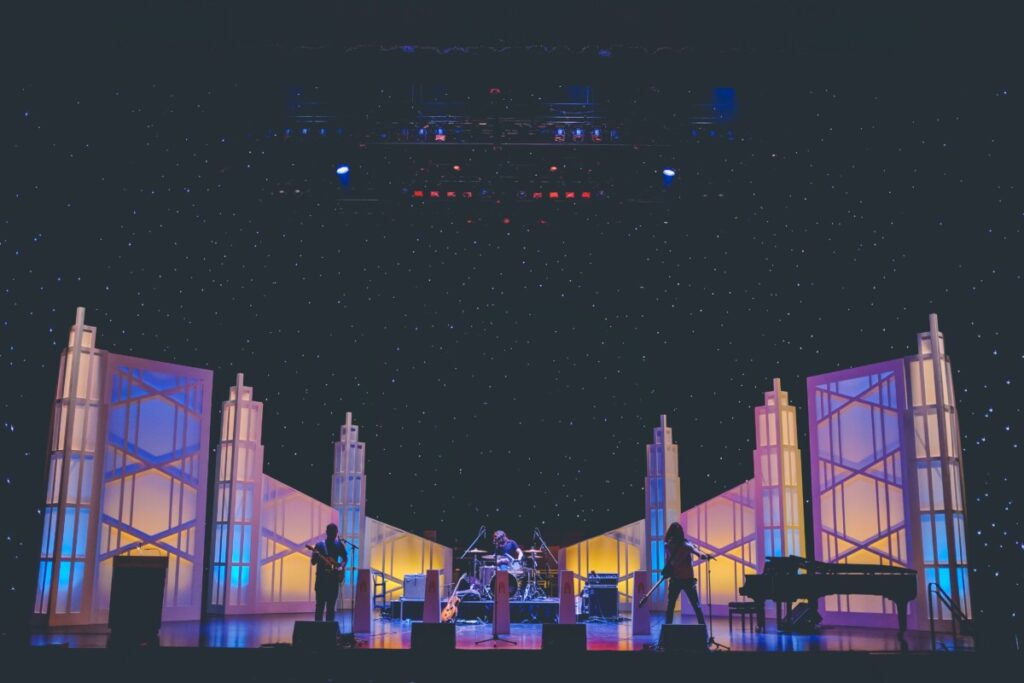
PREPARATION & PLANNING
Preparation and planning are critical components of a successful live show. In this section, we’ll review the essential steps to prepare for your performance and ensure its success.
RESEARCH YOUR AUDIENCE
Understanding your audience is critical to creating a successful live concert experience. Researching your audience will give you an idea of what they like, what they’re looking for in a performance, and what type of music they’re most likely to enjoy.
You can research your audience by looking at streaming demographic information, musical preferences, and favorite local artists. This information will help you create a setlist that appeals to and engages with your audience.
Not sure what bands do before a show? Check out these 12 Things Musicians Actually Do Before A Show (With Examples).
CHOOSE THE RIGHT VENUE
Selecting the right venue is critical to creating a successful live performance experience. When choosing a venue, consider the size of your audience, the acoustics, and the equipment available. You also want to ensure the venue is in a safe and accessible location and has a good reputation.
Once you’ve chosen a venue, visit it before the performance to familiarize yourself with the layout and ensure that it meets your requirements.
Choosing a suitable venue for your performance ensures there are no surprises on the night of your show. When selecting a venue, consider the following factors:
- Capacity: Ensure the venue has enough space to accommodate your expected audience.
- Location: Choose a venue that is easily accessible and located in an area with a high concentration of your target audience.
- Sound System: Consider the quality and capabilities of the sound system at the venue. Make sure it is suitable for your needs.
- Lighting: Ensure the venue has adequate stage lighting to enhance your performance.
- Atmosphere: Consider the overall atmosphere and ambiance of the venue. Ensure it aligns with your style and the experience you want to provide your audience.
- Logistics: Check for availability of necessary resources like parking, loading docks, and dressing rooms.
- Budget: Make sure the venue is within your budget and that the cost of using the venue is feasible for your financial plan.
Choosing a suitable venue ensures that your performance will be an unforgettable experience for you and your audience.

CREATE A SETLIST
Creating a setlist is an important part of preparing for a gig. Your setlist should be designed to engage your audience and showcase your talents. Consider your audience’s musical preferences and choose songs that appeal to them. You should also consider the length of your performance and ensure you have enough material to fill the time slot.
REHEARSE, REHEARSE, REHEARSE
Rehearsing is essential to creating a successful live performance. It allows you to fine-tune your performance and work out any kinks. Try to rehearse in the exact positions you will be in at your show, if possible, to get a feel for the acoustics and the stage. You should also rehearse with your whole band, including any guest musicians or performers, to ensure everyone is on the same page.
Does your band need somewhere to rehearse? Check out these 10 Practice Spaces For Bands That Have Nowhere To Rehearse.
PROMOTE YOUR PERFORMANCE
Promoting your performance is crucial to attracting an audience and ensuring its success. You can promote your gig through social media, flyers, posters, and other advertising. Make sure to include all relevant information, such as the date, time, location, and ticket information, so your audience knows what to expect. You can also contact local media outlets to see if they’ll feature your performance in their events listings.
Promoting your live performance is essential to ensuring a successful turnout. Here are some effective ways to promote:
- Social Media: Utilize social media platforms such as Facebook, Twitter, and Instagram to promote your performance. Share updates, videos, and teasers to build excitement and reach a wider audience.
- Email Marketing: Reach out to your email list and send them updates about your upcoming performance. This will help keep your fans informed and engaged.
- Online Event Listings: Post your performance on event listings websites like Eventbrite to increase visibility and attract new fans.
- Press Releases: Send press releases to local media outlets, including newspapers, radio stations, and blogs, to generate coverage for your performance.
- Local Networking: Attend local events and network with other musicians, venue owners, and event organizers to promote your performance and increase exposure.
- Flyering and Postering: Print posters and flyers to promote your performance and post them in high-traffic areas around town.
- Collaborations: Reach out to other musicians and collaborate on promoting each other’s shows.
By utilizing these methods, you can reach a wider audience and increase the chances of a successful turnout for your performance.
The preparation and planning stage is critical to creating a successful live show. By researching your audience, choosing a suitable venue, creating a setlist, rehearsing, and promoting your gig, you can put on a performance that your audience will love and that will help build your career as a musician.
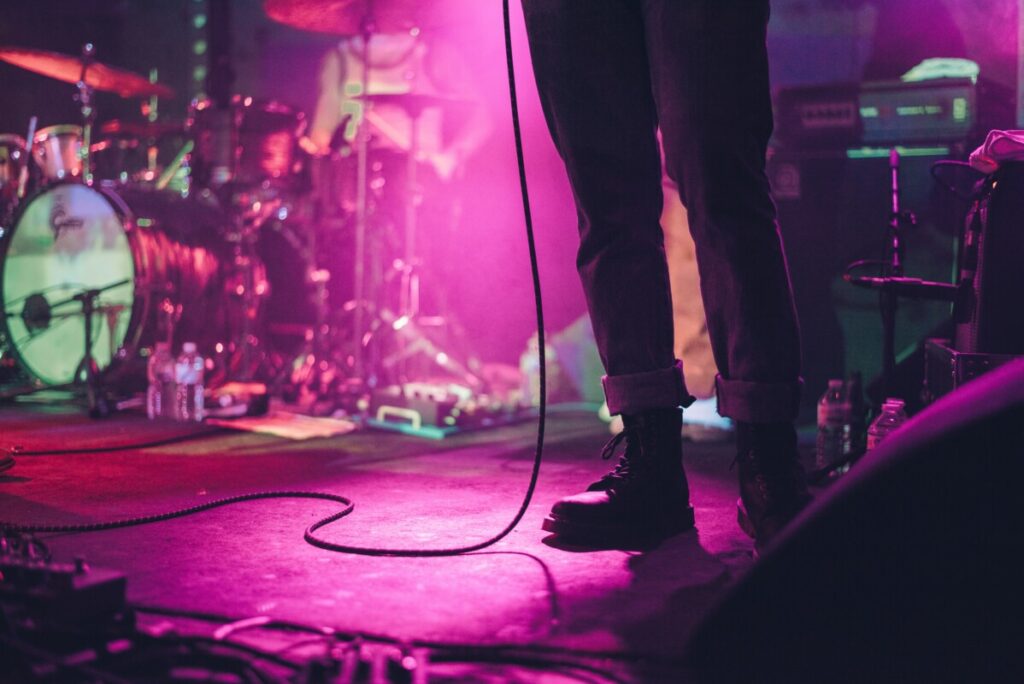
ON-STAGE PERFORMANCE
The on-stage aspects of live music are the centerpiece of a successful concert experience. Most bands think about what the audience will hear but neglect to think about what the audience will see and feel. This section will review the critical elements of excellent on-stage performances and how you can engage your audience to create a memorable experience.
ENGAGE YOUR AUDIENCE
Engaging your audience is key to creating a successful live performance. You can engage your audience by making eye contact, smiling, and speaking directly to them. You should also move around the stage and interact with your audience, as this will help create a more dynamic and energetic performance. Additionally, you can use props, costumes, or other stage elements to help engage your audience and add visual interest to your performance.
INTERACT WITH YOUR BAND MEMBERS
Interacting with your band members on stage is important to creating a successful live show. You should communicate with your band members during the performance and work together to create a cohesive performance. This can include coordinating musical transitions, sharing the stage, and playing off each other’s strengths.
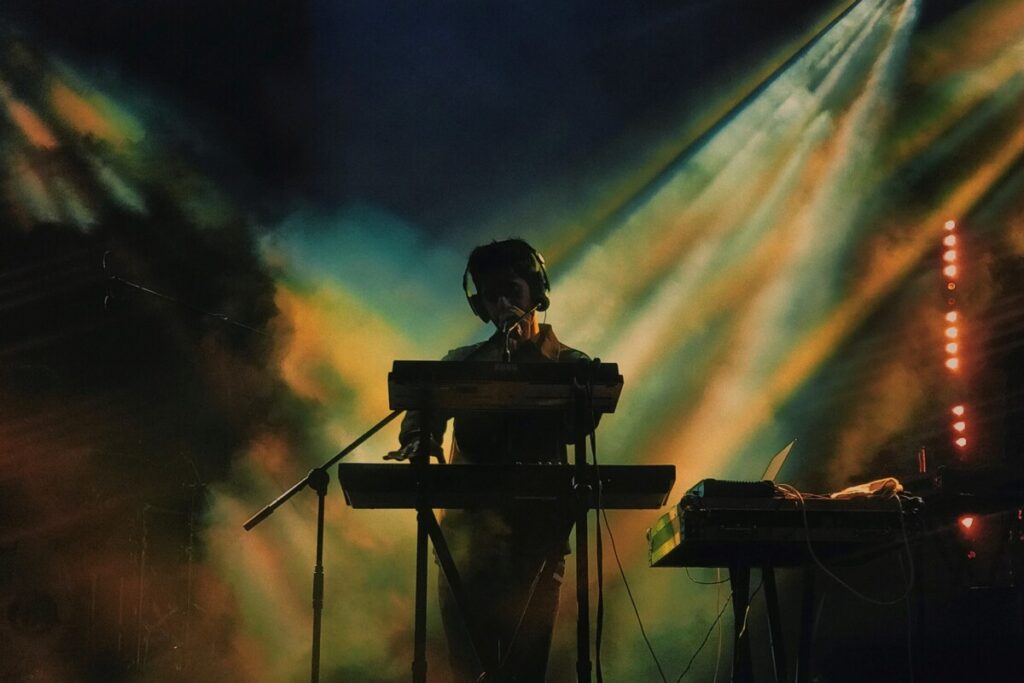
USE STAGE LIGHTING & VISUALS
Stage lighting and visuals play a crucial role in a live performance as they enhance the overall atmosphere and atmosphere of the show. Proper lighting sets the mood, creates energy and excitement, and draws attention to key moments.
Visuals such as projections, backdrops, and special effects can further engage the audience and complement the music being performed.
When used effectively, stage lighting and visuals can help bring a performance to life, creating an immersive and memorable experience for the musicians and their fans.
To effectively utilize stage lighting and visuals during a live performance, consider the following steps:
- Plan ahead: Determine the look and feel you want to achieve and plan your lighting and visual elements to support that vision.
- Collaborate with a lighting designer or technician: They will have the expertise and equipment to bring your vision to life.
- Match lighting with the music: Use lighting to complement the mood and energy of the music being performed.
- Use color and movement: Experiment with different colors and lighting effects to create a dynamic, engaging show.
- Utilize special effects: Add smoke, fog, or other special effects to create a more immersive experience.
- Enhance the visuals: Use projections, backdrops, or other visual elements to reinforce your performance and add an extra layer of engagement for the audience.
- Practice: Rehearse your lighting and visuals to ensure seamless integration with your live show.
Remember, stage lighting and visuals are essential aspects of a successful live gig, so take the time to plan and execute them effectively.
USE SOUND EQUIPMENT CORRECTLY
Using sound equipment effectively is essential to creating a successful live performance. You should work with a sound engineer to ensure that your performance is adequately amplified and the sound quality is high. You should also make sure that your equipment is correctly set up and tested before the performance to ensure there are no technical issues during the performance.
Not sure what the point of soundcheck is? Here are 10 In-Depth Answers To FAQ’s About Soundcheck.
ENCOURAGE CROWD PARTICIPATION
Encouraging crowd participation is a great way to create a more engaging and memorable live experience. You can encourage crowd participation by inviting them to sing along, clap, or dance. Ask volunteers to come on stage or create interactive elements, such as a sing-along or a dance contest. Encouraging crowd participation will help create a more lively and energetic performance and help your audience connect with you and your music.
The on-stage performance is the key to creating a successful live show. By engaging your audience, interacting with your band members, using stage lighting and visuals, using sound equipment effectively, and encouraging crowd participation, you’ll be able to create an experience that your audience will love and that will help build your career as a musician.
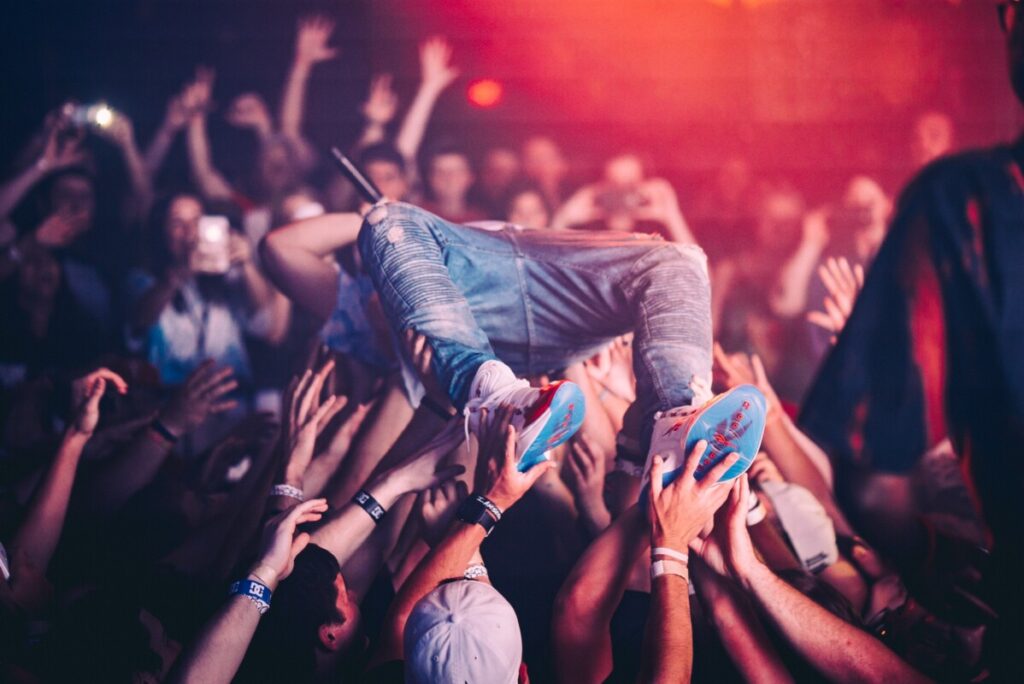
AFTER THE SHOW
After the performance, it’s important to take some time to reflect on how it went and how you can improve in the future. Here are some critical steps to take after your show.
GATHER FEEDBACK
Gather feedback from your audience, band members, and anyone involved in the experience. This can help you identify what worked well and what you can improve upon.
Ask people to be honest and specific about what they liked and didn’t like so that you can make the most of their feedback. You can gather feedback through online surveys, in-person discussions, or by reaching out to people via social media.
CONNECT WITH FANS
Take advantage of the opportunity to connect with your fans after the performance. Thank them for coming and encourage them to share their thoughts and experiences. This can help to build a loyal following, which is important for future performances and promotions.
You can also use this time to promote your upcoming shows and events and offer merchandise or other incentives for fans to continue supporting you.
Connecting with fans after live performances is important to build relationships, gather feedback, and keep your audience engaged. Some effective ways to connect with fans include:
- Encourage audience members to approach you after the performance to chat or take a photo.
- Offer to sign merchandise or take photos with fans.
- Encourage fans to connect with you on social media.
- Host a meet and greet before or after the performance.
- Respond to fan feedback, both positive and negative, professionally and engagingly.
Using these methods, you can show your fans that you appreciate their support and create a stronger connection with them, which will help grow your audience and increase your exposure as a musician.
Does your band need somewhere to sleep after a show? Check out these Places That Musicians Sleep On Tour.
EVALUATE YOUR PERFORMANCE
Take some time to evaluate how things went. Look back at your setlist, and consider what worked well and what didn’t. Consider what you learned from the feedback you gathered and use that information to improve your next gig. Consider also what you could have done differently regarding equipment, lighting, or audience interaction to improve the experience.
PREPARE FOR YOUR NEXT GIG
Use the knowledge and experience you gained from this performance to prepare for your next one. Consider what changes you need to make, whether in terms of your setlist, stage presence, or equipment. Remember what worked well and didn’t, and use that information to improve. Be open to new ideas and try different things to see what works best.
By taking these steps after your performance, you can continue to improve and create even better experiences for your audience. The key is to be proactive and take the time to reflect on what worked well and what you can improve upon. With hard work and dedication, you can create successful live performances that your audience will love and remember for a long time.

MAKE EVERY SHOW MEMORABLE
Creating a successful live performance experience is essential for any musician looking to establish a strong connection with their audience, showcase their talent, and build their brand. The key to success lies in the preparation, execution, and evaluation of every aspect of your performance, from researching your audience to connecting with fans after the show.
In this post, we have discussed the importance of researching your audience, choosing the right venue, creating a setlist, rehearsing, promoting your performance, engaging with your audience, interacting with your band members, using stage lighting and visuals, and using sound equipment effectively. We also discussed the importance of gathering feedback, connecting with fans, and evaluating your performance to ensure you continue improving and growing as a musician.
It is essential to strive for excellence in all aspects of your live performance, as this sets you apart from other musicians and helps you establish a strong connection with your fans. The live performance experience is a crucial aspect of a musician’s career. It should be approached with care, dedication, and a commitment to providing the best possible experience for your audience.
By following the essential steps outlined in this post, you can create a successful live performance experience that will showcase your talent and help you build a solid and dedicated fanbase. So, go ahead and start preparing for your next performance, and let your talent shine through!
Related Questions
What equipment do I need for a live performance? The equipment you’ll need for a live performance will depend on the type of performance and your setup, but some standard pieces of equipment include a musical instrument, microphone, speakers, sound mixer, and stage lighting.
How do I engage my audience during a live performance? Engaging your audience during a live performance can help make the experience more enjoyable. You can engage your audience by interacting with them, encouraging crowd participation, telling stories, and playing crowd-pleasers.
What should I do if there’s technical difficulty during a performance? Technical difficulties can happen during any live performance. It’s essential to remain calm and have backup plans in place. If possible, quickly fix the issue or improvise. If necessary, move on to the next song or take a brief break to resolve the issue.
How do I create a setlist for my live performance? Creating a setlist for a live performance requires careful consideration and planning. Start by choosing a mix of your most popular songs and crowd-pleasers. Make sure to pace the setlist so that it builds to a climax, and don’t forget to leave time for encores.
How do I ensure good sound quality during a live performance? Good sound quality is essential for a successful live performance. You can ensure good sound quality by properly setting up your equipment, sound checking before the performance, using high-quality sound equipment, and having a sound technician on hand to address any issues.
For more industry tips and music marketing hacks, check out Ennui Magazine. You can also follow us on Facebook, Twitter, Instagram, Pinterest, and YouTube.
